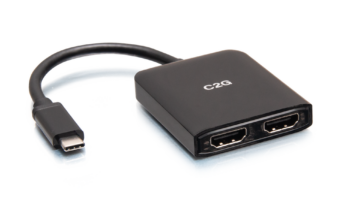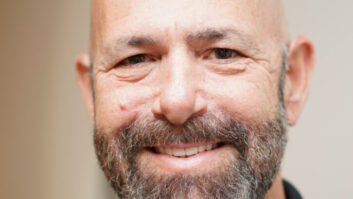The seven HDMI founders are expected to announce this week the finished specifications for the High Definition Multimedia Interface (HDMI) — the new enhanced form of the Digital Visual Interface (DVI) standard.
HDMI provides an interface between any audio/video source, such as a set-top box, DVD player and A/V receiver, and an audio and/or video monitor, such as a digital television (DTV).
It will support standard, enhanced, or high-definition video, plus multichannel digital audio on a single cable. It transmits all ATSC HDTV standards and supports 8-channel digital audio (at up to a 192KHz sampling rate), with bandwidth to spare for future enhancements.
The new specification is billed as a more robust version of the one-way DVI system for uncompressed digital video, adding provisions for very high quality audio and a more compact and CE-friendly 15mm, 19-pin connector.
Not included as part of the standard — but widely understood to be a necessary compliment to the interface — was the Intel-developed High-bandwidth Digital Content Protection (HDCP) protocol designed to protect HDMI and DVI signals from piracy.
Steve Tirado, COO of Silicon Image, which pioneered the HDMI and DVI formats, said products could not be authenticated for A/V by the HDMI system without HDCP.
Intel, which developed HDCP, handles licensing for the copy protection system separately from the DVI and HDMI interfaces it is meant to protect.
The seven HDMI Founders include Hitachi, Matsushita, Philips, Silicon Image, Sony, Thomson and Toshiba.
Tirado said the completion of the HDMI spec will clear the way for Silicon Image and other chip manufacturers to begin production of the HDMI silicon that can be placed in next-generation DTV products.
“We are excited that we are going to have silicon to talk about, and products in the market,” Tirado said. “We expect to see a number of product prototypes at CES.”
Once the final spec is published, silicon manufacturers will be able to acquire a license to produce HDMI chips for CE products. A five-cent licensing fee is applied to each product (four cents for HDMI and one cent for HDCP), and will be paid by the manufacturer of the finished product to the HDMI Founders and Intel, respectively.
Additionally, Silicon Image will establish a compliance testing lab (one of several planned), as part of a process to ensure interoperability between HDMI products.
Products that pass the compliance test will carry an HDMI logo, Tirado said.
He added that the spec also covers the conversion of video formats, so signals on a PC can be properly relayed for display on a TV monitor, for example.
Supported in the spec are all ATSC/DTV TV formats. “The audio stream is serialized and the data packetized for transmission along with the video signal,” Tirado explained. “At the receiver, the two streams are segregated, and the data is depacketized for playback.”
Because the format was designed as a connection to send uncompressed digital video signals to TV displays, it is not intended to facilitate home networking. Signals are relayed at a rate of 2.2Gbps, sufficient for 1080i HDTV signals, although the spec allows for up to 5Gbps.
Regarding copying and home networking, Tirado said “we aren’t trying to be all things to all people.” The IEEE-1394 digital interface was designed for compressed signals and would likely be used by CE manufacturers as a secondary connector for home networking and video recording purposes, he said.
Tirado said Silicon Image was confident it would have some early HDMI chips it plans to manufacture ready to show product makers at CES. The first HDMI products, then, could start to appear late in 2003 or 2004.
Tirado said more than 150 products using DVI with HDCP — 80 HDTV displays, 43 projectors, one A/V receiver, 11 set-top boxes and two DVD players — are either in production or slated to be very soon. The new HDMI spec is directly based on DVI with HDCP and will be fully adaptable with it, Tirado said.













